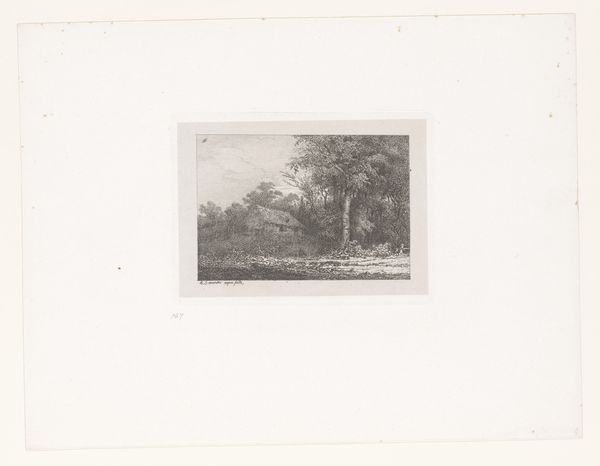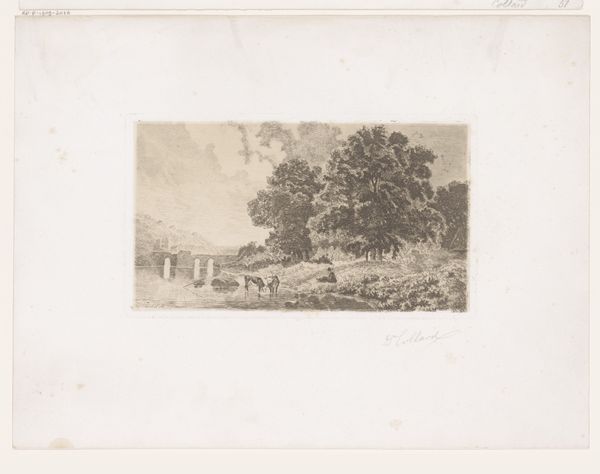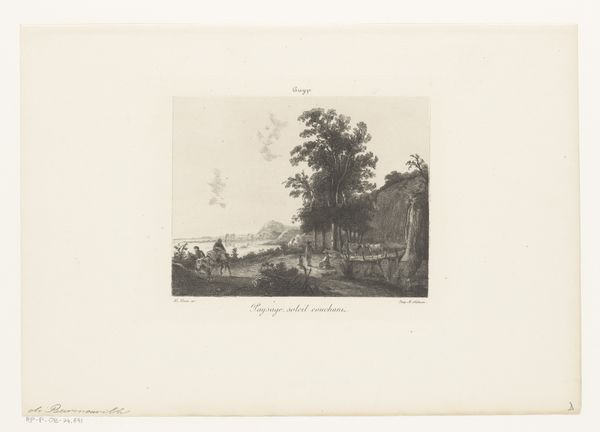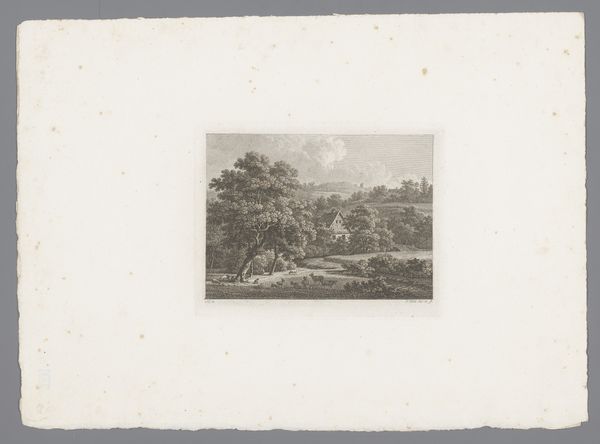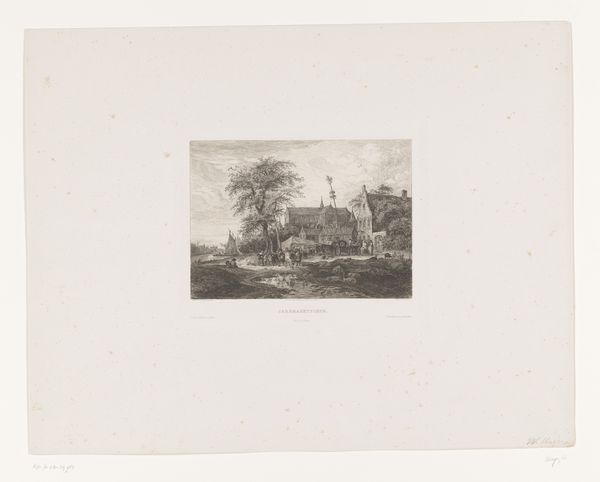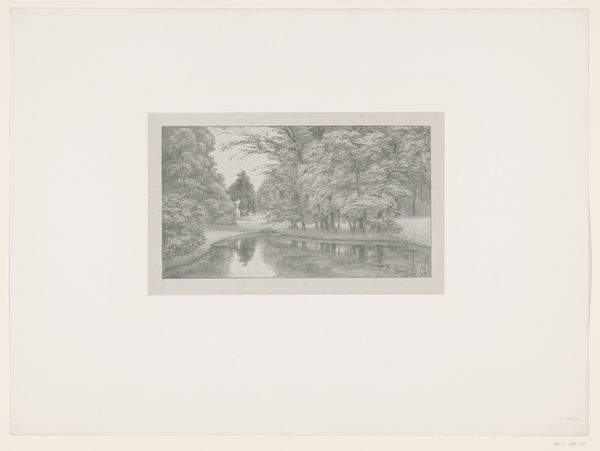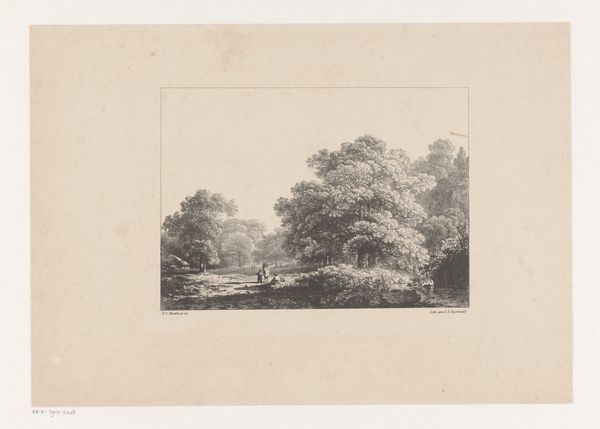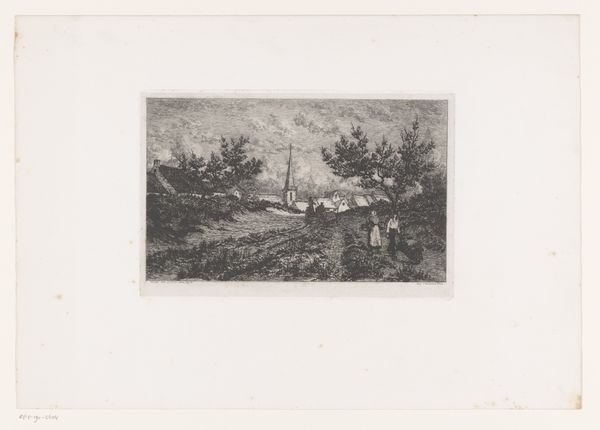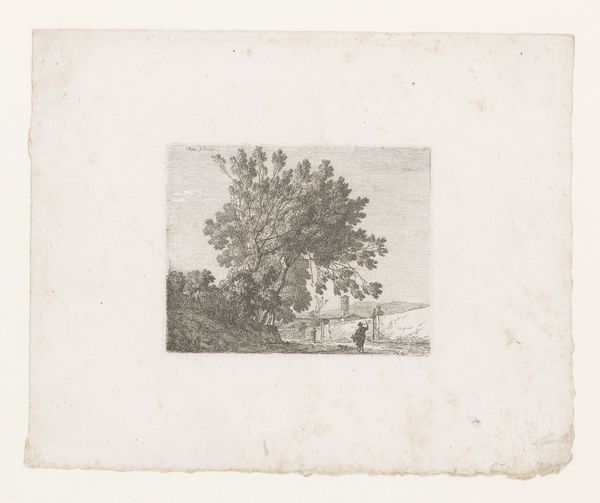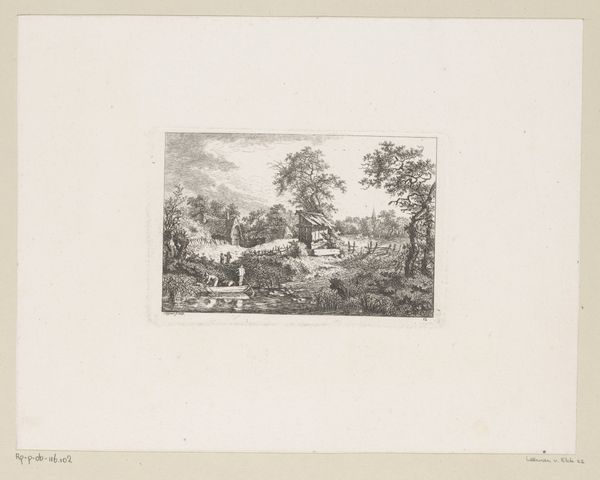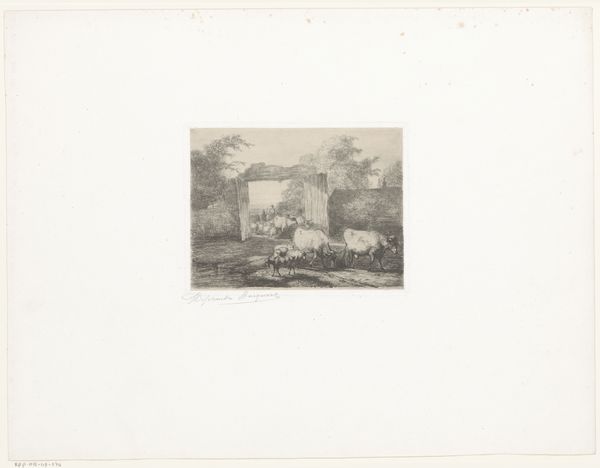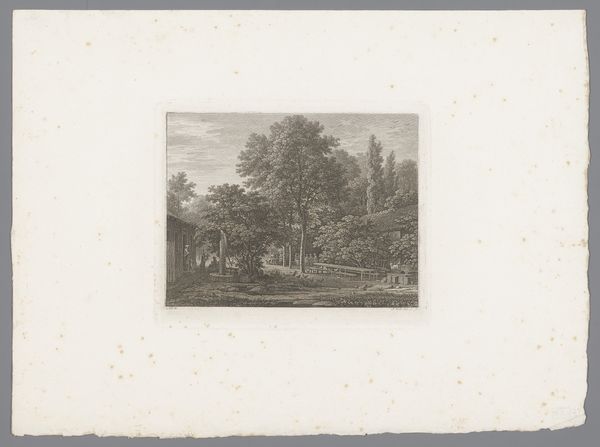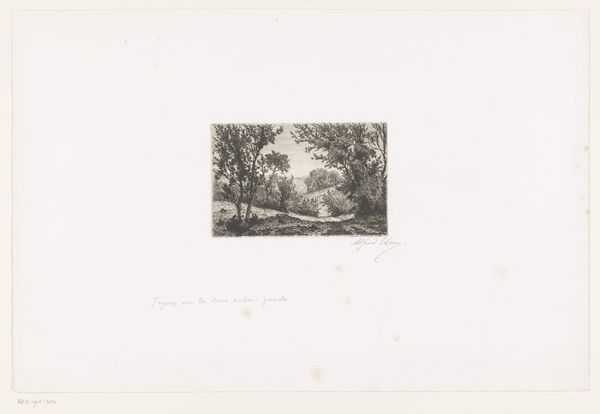
print, etching
#
photo of handprinted image
#
dutch-golden-age
# print
#
etching
#
landscape
#
realism
#
monochrome
Dimensions: height 226 mm, width 290 mm
Copyright: Rijks Museum: Open Domain
William Unger etched "Watermolen," a scene dominated by the ancient symbol of the watermill, with the surrounding natural elements. The watermill is more than just a structure; it represents the harnessing of nature's power for human endeavor, a microcosm of our ceaseless effort to control and utilize the world around us. Across cultures, the image of the mill evokes ideas of industry, transformation, and the cyclical nature of life. Think of the windmills in Dutch paintings, which, like this watermill, symbolize prosperity and the ingenuity of man. Yet, consider how this symbol evolves. In earlier times, the rhythmic turning of a wheel might have been seen as a magical or divine act, connected to the turning of the cosmos. Over time, it becomes a more mundane sign of productivity, a reminder of our ever-growing separation from the natural world. In viewing Unger's "Watermolen," we are not just seeing a landscape. We are engaging with a symbol that carries centuries of human hopes, dreams, and anxieties about our place in the universe.
Comments
No comments
Be the first to comment and join the conversation on the ultimate creative platform.
